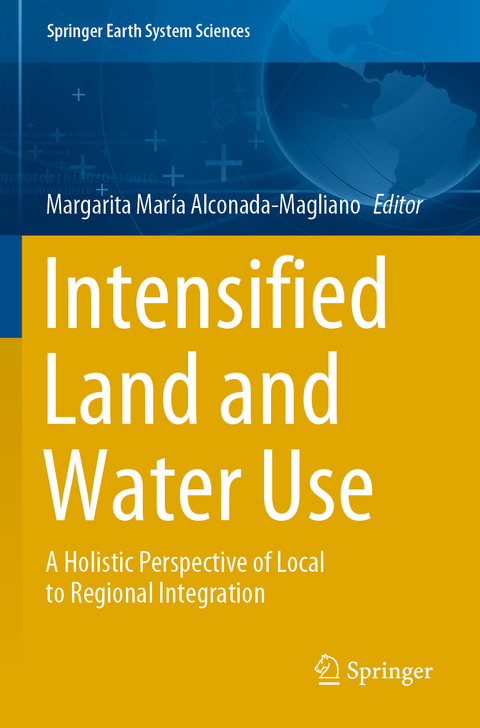
Intensified Land and Water Use
Springer International Publishing (Verlag)
978-3-030-65445-0 (ISBN)
This book combines multidisciplinary studies on the environmental consequences of intensified use of land and water, and the fusion of land to provide food for a growing population. Studies on water, vegetation, and soil are addressed from an environmental management perspective with a special focus on the relation between natural elements and humans.
This book considers the essential dynamics of humans and the natural environment, which is especially important in areas with shallow water-table that influence directly on agricultural activities (crops, livestock, and forests), land management, flooding, droughts, waterlogging, salt-affected soils (saline and sodic) and variation in obtained water quality in wells where these processes as related to the local and regional geomorphology control.
The studies present hydrological processes towards the definition of an adequate use of soil and water with consequences of its management on the environment. Also, water studyprocedures are presented as well as their relation to other elements of the landscape. Methodologies such as the Tóthian flow system concept are recognized by different authors to provide the reader with solid interdisciplinary analyses of related environmental components such as soils, vegetation, surface water, geomorphology, geological framework and groundwater physical-chemical composition.1 Preface.- 2 Hydrological approach for evaluation of soil and water degradation processes as related to climate change and biodiversity losses.- 3 Prediction of soil salinization and sodification processes as affected by groundwater under different climate and management conditions.- 4 Landscape features as conditions for vegetation and crop growth. Physiological aspects of plants response to salinity, alkalinity and shallow water-table.- 5 The classical fact in water insecurity: groundwater; the need to recognize the importance of its presence.- 6 Groundwater and its role in maintaining the ecological functions of ecosystems; advances in holistic approaches in studies on the interaction vegetation-groundwater flows.- 7 Groundwater flows in Bajos Submeridionales of Santa Fe wetlands as part of the Chaqueña plain (Argentina) and their use for livestock production.- 8 Geochemical feature of intermediate flow discharging in Paraná river system, Argentina.- 9 Hydrogeochemical characterization of groundwater and its interaction with other components of the environment in Mexico.- 10 Landscape functioning as a basis for defining its sustainable intervention: soils and groundwater flows.
| Erscheinungsdatum | 31.03.2022 |
|---|---|
| Reihe/Serie | Springer Earth System Sciences |
| Zusatzinfo | XXIV, 275 p. 85 illus., 77 illus. in color. |
| Verlagsort | Cham |
| Sprache | englisch |
| Maße | 155 x 235 mm |
| Gewicht | 462 g |
| Themenwelt | Naturwissenschaften ► Geowissenschaften ► Geologie |
| Schlagworte | Anthropic soil • Anthropic water • Anthropogenic water stress • biodiversity, land and water • Environmental Geography • Groundwater flows • soil and water degradation • vegetation-groundwater flows • Water insecurity |
| ISBN-10 | 3-030-65445-1 / 3030654451 |
| ISBN-13 | 978-3-030-65445-0 / 9783030654450 |
| Zustand | Neuware |
| Haben Sie eine Frage zum Produkt? |
aus dem Bereich


